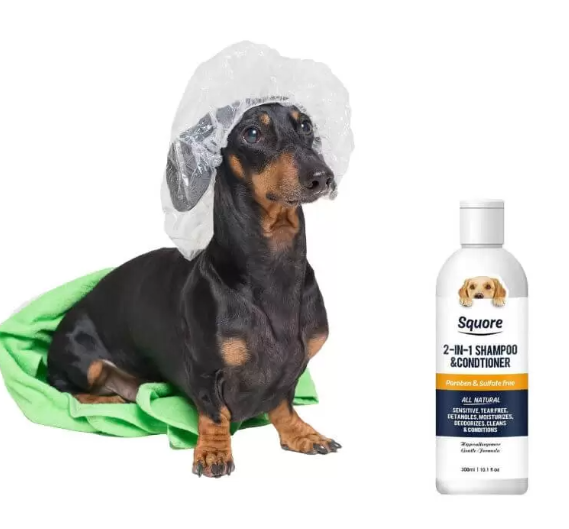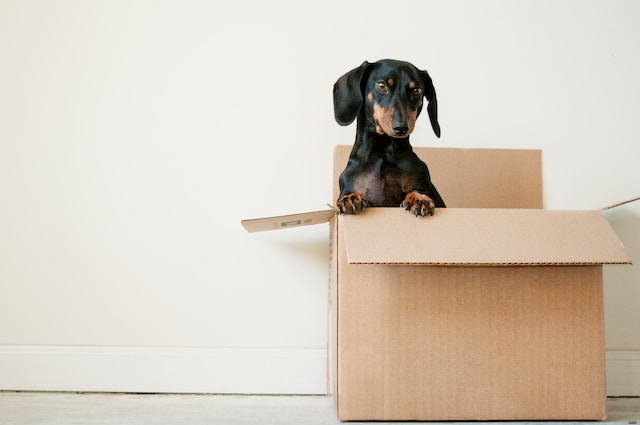Hair loss, or alopecia, is one of the issues that can be worrisome for numerous dachshund owners. Loved for its unusual look and a fiery spirit, this breed can suffer from allergic dermatitis, and alopecia among other conditions. So, what does alopecia means, and why it occurs in Doxies? Read the following lines and discover everything you need to know about alopecia in Dachshunds.
What is Alopecia in Dachshunds?
Definition and Overview
Alopecia in dogs is a condition that results in increased hair fall and may cause complete or partial baldness. Dogs of all age, breed, and gender can be affected.
Types of Alopecia
There are different forms of alopecia which have individual causes and features. These include alopecia areata, pattern baldness, and post-clipping alopecia, among others.
Alopecia in Dachshunds
Dachshunds are on a higher tendency to suffer from alopecia due to genetic prediscposition. To help your dog fight against this condition, it’s essential to early detect it and find the effective treatment.
Besides genetics, factors like hormonal imbalance and other underlying health issues can be the triggers for this condition. Hair loss in dachshunds might look scary for most pet parents. Nevertheless, proper therapy can help your dog to recover and enjoy normal living.
Symptoms of Alopecia in Dachshunds
Recognizing the Signs
This condition may have symptoms like patchy hair loss, thinner fur, or bald spots in some parts of the body. Hair loss can also be accompanied by skin irritation and color changes. The shedding begins mostly in the earline and on the paws of the Doxies. They are able to reach the area behind their ears and lick or chew their paws to blood, so that’s why these body parts are often the first spots where baldness appears.
When to See a Vet
In case you realize that they have begun licking, scratching or chewing their body parts they need to be taken to a vet. This can help avoid unnecessary complications and improve outcomes. There are cases where dogs scratch or chew their skin to blood, so those spots can easily become infected. In addition to this, alopecia usually doesn’t come along with an itchy feeling but just with hair thinning.

Diagnosing Alopecia in Dachshunds
Diagnosing alopecia in dachshund is sometimes like solving a crime. In other words, this is like asking the “why” the damn hair loss problem! Here’s a rundown of the steps and tests your vet might use to get to the bottom of things:
1. A Good Chat
Therefore, your vet should inquire as to when you began noticing the hair loss. He will also inquire about whether you change your dog’s environment, food, or behavior, and whether it seems itchy or uncomfortable.
2. Physical Examination
And finally, a good overall check. The vet will examine your dachshund’s skin and coat, looking for rashes or bald patches in particular locations.
3. Skin Scraping
That is a little more frightening than it appears to be. Using a microscope, the vet will examine the sample under the skin for the presence of mites or fungal infection. It’s a normal starting point when you want to rule out parasites and infections.
4. Blood Tests
Blood tests reveal underlying problems when there’s nothing obvious with external causes. Such tests include examinations of various hormone imbalances within the body or problems with the thyroid.
Especially for those mysterious cases, checking hormone levels can be crucial. Imbalances in hormones can definitely lead to hair loss.

5. Diet and Lifestyle Assessment
Not a test per se, but your vet might assess your dog’s diet and lifestyle. Nutritional deficiencies or stress can sometimes contribute to alopecia. If you’re feeding your Dachshund with a low-quality food, then he/she probably suffers from alopecia due to artificial colors, flavors and by-products found in the diet.
Unfortunately, some dog food brands often put the worst ingredients in their food. So, before you rush to buy a food for your Doxie that looks good on package, please check the label. It will reveal you everything you need to know about what your dog eats.
Common Causes of Alopecia in Dachshunds
Genetic Factors
Some dachshunds inherit a predisposition to alopecia, making genetics a significant factor in the development of this condition.
Environmental Factors
External factors like allergens, parasites, or poor nutrition can also contribute to alopecia in dachshunds.
Treatment Options of Alopecia in Dachshunds
Medications
Depending on the cause, treatment might involve topical ointments, oral medications, or hormone therapy. Topical creams, and oitments serve to ease itchiness, while oral medications such as antihistamines can help in case of allergy-caused alopecia.
On the other hand, hormone therapy serves to help pooches who deal with thyroid gland issues and similar problems.
Home Care and Lifestyle Changes
Adjustments in diet, grooming practices, and the home environment can support the treatment and recovery process. For example, if your Dachshund’s alopecia is caused by environmental factors, then you’ll need to pay more attention to hygiene in your house. Besides, some dogs can develop bald spots when their skin comes in contant with house cleaning chemicals or laundry sootheners. Therefore, the reasons for this issue are countless.
Natural Remedies for treating alopecia in Dachshunds
- Proper Nutrition: Start with a well-balanced diet. Ensure your dachshund gets all the necessary nutrients, especially those that support skin and coat health. Omega-3 and Omega-6 fatty acids, found in fish oil supplements, can be particularly beneficial. Besides, fruits that are rich in antioxidants such as blueberries, can also be beneficial to your Doxie’s skin.
- Regular Grooming: Regular brushing helps distribute natural oils throughout the coat, promoting healthier skin. Plus, it’s a great way to bond with your furry friend!
- Aloe Vera or Coconut Oil: These natural moisturizers can be soothing for dry or irritated skin. Just apply a small amount to the affected areas. However, make sure your dachshund doesn’t lick it off!
- Stress Reduction: Believe it or not, stress can contribute to hair loss. Create a calm environment for your pet and engage in regular play and exercise. If your pet suffers from an allergy-caused alopecia, then we recommend you to dress him/her in a special type of clothing that works as a protective layer.
Medical Treatments
- Topical Treatments: Depending on the cause, your vet might prescribe medicated shampoos or topical ointments to relieve symptoms and treat underlying skin conditions.
- Oral Medications: If the alopecia is due to a hormonal imbalance or other systemic issues, oral medications or supplements might be necessary.
- Allergy Management: In cases where allergies are the culprit, your vet may recommend allergy medications or even allergy shots.
- Antibiotics or Antifungals: If a bacterial or fungal infection is causing hair loss, appropriate medications can help clear it up.
Treatment Duration
Duration of treatment for alopecia in dachshunds can really vary. If it is a minor problem, such as skin infection, it might take a few weeks. And, in the case of chronic conditions, like hormonal imbalances or allergies in your Dachshund, it can last up to several months or even years. The most important thing is to listen to your vet and have lots of patience. It’s also important to note that hair regrowth can be slow. Depending on the severity, it can last up to several months.
Living with a Dachshund Having Alopecia
Daily Care Tips
Proper care, including regular grooming and skin protection, is crucial for dachshunds with alopecia. If your Doxie suffers from allergy-cause hair loss, then your vet might recommend you dressing him/her in a stretchy jumpsuit.
Emotional Support for Your Pet
Providing emotional support and a stress-free environment is essential for the well-being of a pet experiencing hair loss.
Alopecia vs. Other Skin Conditions
How to Differentiate
It is necessary to offer emotional support and stress-free environment to pet experiencing hair loss. The condition must be distinguished from any other skin disease in order to choose the best method of treatment.
When Alopecia is a Symptom
Alopecia in doxies may at times indicate another problem in the body that requires medical attention.
Breeder Responsibilities
Ethical Breeding Practices
Breeders should also focus on health and genetics to minimize the occurrence of alopecia to control it.
Educating New Owners
About preparedness and early interventions, the new owners need to be informed about some potential health problems, such as alopecia.
Is alopecia in dachshunds contagious?
Alopecia is usually not contagious. However, if it’s caused by parasites or fungus, then your dog can pass it on to you as well as to other dogs in its vicinity.
What kinds of Dachshund shampoo and other grooming products are advised for alopecia affected dachshunds?
Your vet will advise you on gentle and skin friendly/supportive grooming products to reduce the symptoms. At the Dachshund Space store you can find one of the best shampoos for Doxies that is carefully made to suit their sensitive skin. The 2-in-1 Shampoo and Conditioner for Dachshunds features a Coconut oil that fights bacteria, soothes skin and releases itchiness. Thanks to a conditioner that comes in the same package, you won’t deal with knots on your long-haired Doxie.

We also recommend you to take a look at the Bath Massage Dachshund Brush. It features a hidden box on the top where you should add a few drops of shampoo. The soft silicone pins will massage the skin of your pooch and support the new hair growth.


Pingback: 8 Best Picks Of Dachshund Shirts For Warm & Sunny Days